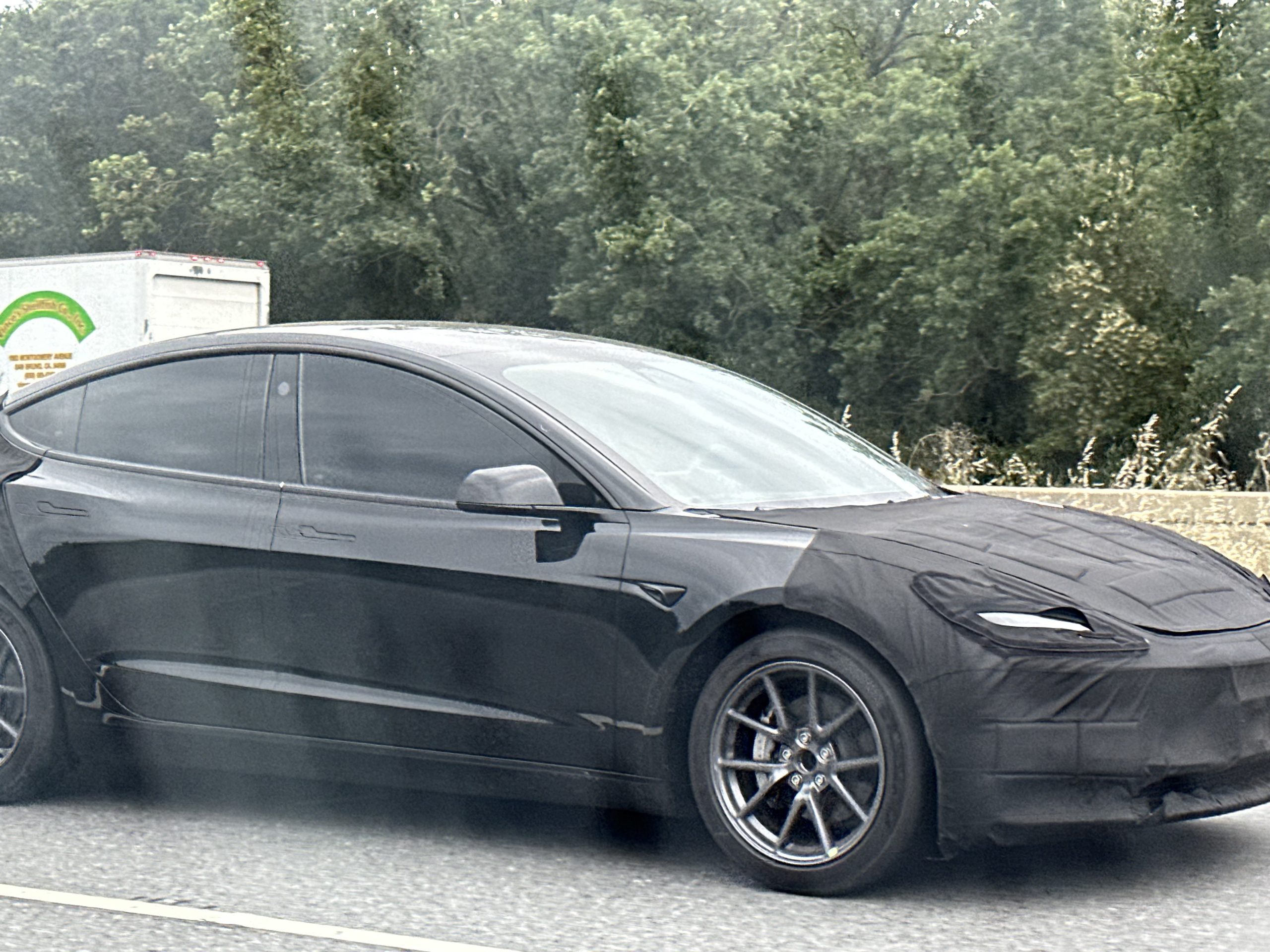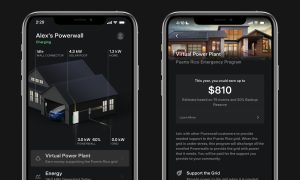

Rumors
Tesla Supercharger V3.0 will be 200 kW and liquid-cooled, says source
Tesla is set to reveal details for the third iteration of the company’s fast-charging Supercharger tomorrow. Speculation for Supercharger V3.0 point to a charger that has a power output of 200 kW, uses liquid-cooled cables and has a slightly larger footprint than the current generation Supercharger.
Updated: Tesla V3 Supercharger will charge at 1,000 mi/hr
Details originating from the TeslaMotors subreddit community, hint at a first, fully redesigned Supercharger V3.0 charging station that will be located in the Northwestern United States and along major corridors that serve as key bridges between other charging locations that are spaced further apart.
Redditor NetBrown, citing a source that’s familiar with the Supercharger 3.0 project, indicates that the charger will have a built-in coolant system at the base of the unit that pumps fluid through a thinner charging cable. The chargers can support up to 250 kW of max power but will at first be limited to 200 kW. Model 3 vehicles and their 2170 form factor battery cells will be able to leverage the higher charging rate. However, it’s still to be determined what rate of charge Model S and Model X vehicles can support. This will vary by the generation of vehicle.
Other rumored details being shared about Supercharger V3.0 include:
-
-
No need to split power between multiple vehicles charging
-
-
-
Photovoltaic and Powerpack integration
-
-
-
Retrofittable to current generation Superchargers
-
-
96% power conversion efficiency vs. 92% on Supercharger V2
- 2.5X heavier than the current generation Supercharger
The ultra-fast chargers will initially be meant for long-distance travel only. The next-gen chargers will be deployed in key locations to bridge gaps in the existing Supercharger Network, such as in Forks, WA, and North Bend, WA. Each V3.0 station will also have a site master controller equipped with 4G LTE, allowing the units to be monitored remotely by Tesla but also communicate directly with the vehicle for usage and billing information.
Tesla owners will see benefits once the rollout of Supercharger V3.0 is fully underway. Long-distance trips will be faster as stops in charging stations will get shorter. The ultra-fast chargers will help the company address Supercharger congestion as well, as the faster-charging speeds will also result in faster vehicle turnover, allowing more cars to access a station over some time.
Beyond Supercharger V3.0, Tesla is working on a commercial Megacharger station that’s being developed for its fleet of all-electric Semi trucks.
Rumors
Tesla India partners with Tata Group on local supply chain: Rumor
Rumors say Tesla & Tata Group are teaming up on a local supply chain, increasing the chances of Tesla India finally being established.

Tesla India is reportedly partnering with Tata Group companies to establish a local supply chain and domestic parts production.
Tesla India has allegedly partnered with a few Tata Group companies, including Tata AutoComp, Tata Consultancy Services, Tata Technologies, and Tata Electronics. Tesla and the Tata Group companies are reportedly discussing the possibility of establishing facilities in India, near Tata Group’s manufacturing factories.
“Tesla is, in a way, readying the supplier base in India. We are very sure that once Tesla starts manufacturing here, Indian suppliers will benefit from sourcing opportunities,” an industry source told the Economic Times.
Tesla and Tata Group are supposedly discussing the possibility of developing and producing components like castings, forgings, electronics, and fabrication items. A few sources have also hinted that Tesla may intend to procure supplies from companies outside China and Taiwan, like wiring harnesses, electric motors, gearboxes, and castings.
Tesla wouldn’t be the first company to distance itself from Chinese suppliers. Earlier this year, for example, Panasonic Energy sought to reduce its reliance on Chinese sources, specifically for electric vehicles (EVs) produced in the United States.
Tesla may also be forming stronger ties within India for tax advantages and financial incentives. Last year, the Indian government was close to finalizing a new import tax policy that would encourage foreign EV automakers to invest in the country in exchange for specific tax advantages and incentives. The American EV manufacturer was supposedly set to invest $2 billion in a new plant and buy $15 billion worth of auto parts in India if the new policy would reduce Tesla’s import duties.
India’s strict rules on imported vehicles have always been a point of strain for Tesla’s entry into the country. It has a 60% import duty on vehicles below $40,000 and a 100% rate on vehicles above $40,000. U.S. President Donald Trump and his administration want India to completely eliminate or significantly reduce car import tariffs.
News
Tesla Model 3 ‘Highland’ rumored to bring ‘major’ exterior redesign, slew of modern improvements

Tesla’s Model 3 “Highland” has been speculated upon for nearly a year after being brought to light in late 2022 by a leaked report. More details continue to pour out, and rumors of a “major” exterior redesign and a slew of modern improvements are set to bring the automaker’s first mass-market vehicle out of the late 2010s and into 2023.
After being brought to light in late 2022, more details about “Highland” have been revealed through various sources. Teslarati has revealed that Tesla has been working on the project for a year now, despite it only being known about since October.
Periodic sightings of the “Highland” Model 3 have shown slightly redefined front ends, new wheels, new taillights, and other improvements cosmetically. However, initial reports had pushed for more attention to be paid to infotainment.
Tesla Model 3 Highland design details and upgrades confirmed
Teslascope is now indicating that Tesla is planning to implement “dozens” of technological advancements that will update the Model 3 significantly. And although Tesla “refreshed” the Model 3 just two years ago, these changes were mostly to update the look without changing the overall design. One example of this is the “chrome delete” look it now equips.
The Model 3 will now feature steer-by-wire, a system that relies on digital signals to adjust the driving experience and remove anything from vibrations to sudden bumps that can be caused by things like potholes.
Tesla will also rumoredly use matrix LED headlights across the entire Model 3 lineup and also use RGB ambient lights for a more modern feel.
Tesla is incorporating dozens of technological advancements within Highland, including, for the first time, steer-by-wire Yoke and steering wheels.
Other additions include matrix LEDs on all trims & redesigned RGB ambient lights, providing a more modern feel for all passengers.
— Teslascope (@teslascope) June 22, 2023
Tesla is also looking to be more sustainable with its powertrains for the Model 3 through the use of recycled materials. This a detail that will reportedly spread through the Model 3 program and extend to the Model Y.
It seems Tesla’s biggest goal with the Model 3 “Highland” revamp was to give owners what they wanted, as suggestions were routinely received by CEO Elon Musk on Twitter.
But there’s also an improvement in the quality of parts, which includes upgraded cameras that have been seen on the Hardware 4-equipped Model S, Model X, and Model Y vehicles. These improved quality cameras are set to help Tesla’s self-driving efforts, and many owners have reported the new installations are obviously of higher quality than the old iterations.
Based on those working closely on the Highland project, we’ve been told that Highland will not only include the upgraded cameras we’ve seen on HW4-equipped vehicles but will be one of the first models to incorporate a new front fascia.
Yes, that includes a new bumper camera. ?
— Teslascope (@teslascope) June 22, 2023
Routine sightings of the Model 3 Highland project have continued through the past few months, and hopefully, we’ll be able to see a less-covered version of the car moving forward.
I’d love to hear from you! If you have any comments, concerns, or questions, please email me at joey@teslarati.com. You can also reach me on Twitter @KlenderJoey, or if you have news tips, you can email us at tips@teslarati.com.
News
Tesla rumored to be purchasing wireless charging company Wiferion

Tesla is rumored to be purchasing wireless charging company Wiferion, a Freiberg, Germany-based entity with charging and power solutions.
Wiferion describes itself as “the industry’s leading supplier of automated, wireless power supply systems.” The company has worked to provide over 100 companies with wireless charging solutions since 2015, when it initially started developing products.
BREAKING: Tesla in process of buying Wiferion – wireless charging for both Electric Vehicles and Robots pic.twitter.com/ER9ajNwe2N
— Herbert Ong (@herbertong) June 21, 2023
Wiferion entered the North American market after reaching a global licensing agreement with WiTricity last year, which unveiled its wireless charging tech using a Tesla last year.
A report from Gründerszene/Business Insider states that Wiferion is set to offload its business to Tesla International BV, a filing in the German Commercial Register indicates. “The shareholders intend to sell their shares in the company to Tesla International BV by means of a purchase agreement,” the filing said.
Tesla International BV is a wholly-owned subsidiary that operates out of the Netherlands.
The publication went on to ask two Wiferion investors if the sale was taking place, and they confirmed it but would not say what company the deal would be with.
The deal could be a work in progress toward Tesla’s wireless charging device, which it seemed to quietly unveil during the Shareholder Meeting earlier this year. Tesla showed a vehicle sitting above a wireless charging pad in a garage, seemingly hinting toward a wireless charging module that would soon be on the way.
Tesla teases mysterious “wireless” home charger on Investor Day
Tesla has used company acquisitions as a means to move certain projects forward in the past. In 2019, Tesla acquired Maxwell Technologies, only to sell it a couple of years later in 2021. It also bought Hibar Systems in late 2019.
Both of these purchases were groundbreaking moves to help Tesla develop in-house battery cells, which it produces at several of its manufacturing locations, including in California and Texas.
I’d love to hear from you! If you have any comments, concerns, or questions, please email me at joey@teslarati.com. You can also reach me on Twitter @KlenderJoey, or if you have news tips, you can email us at tips@teslarati.com.
-

 Elon Musk1 day ago
Elon Musk1 day agoWaymo responds to Tesla’s Robotaxi expansion in Austin with bold statement
-

 News1 day ago
News1 day agoTesla exec hints at useful and potentially killer Model Y L feature
-

 Elon Musk2 days ago
Elon Musk2 days agoElon Musk reveals SpaceX’s target for Starship’s 10th launch
-

 Elon Musk3 days ago
Elon Musk3 days agoTesla ups Robotaxi fare price to another comical figure with service area expansion
-

 News1 day ago
News1 day agoTesla’s longer Model Y did not scale back requests for this vehicle type from fans
-

 News1 day ago
News1 day ago“Worthy of respect:” Six-seat Model Y L acknowledged by Tesla China’s biggest rivals
-

 News2 days ago
News2 days agoFirst glimpse of Tesla Model Y with six seats and extended wheelbase
-

 Elon Musk2 days ago
Elon Musk2 days agoElon Musk confirms Tesla is already rolling out a new feature for in-car Grok








